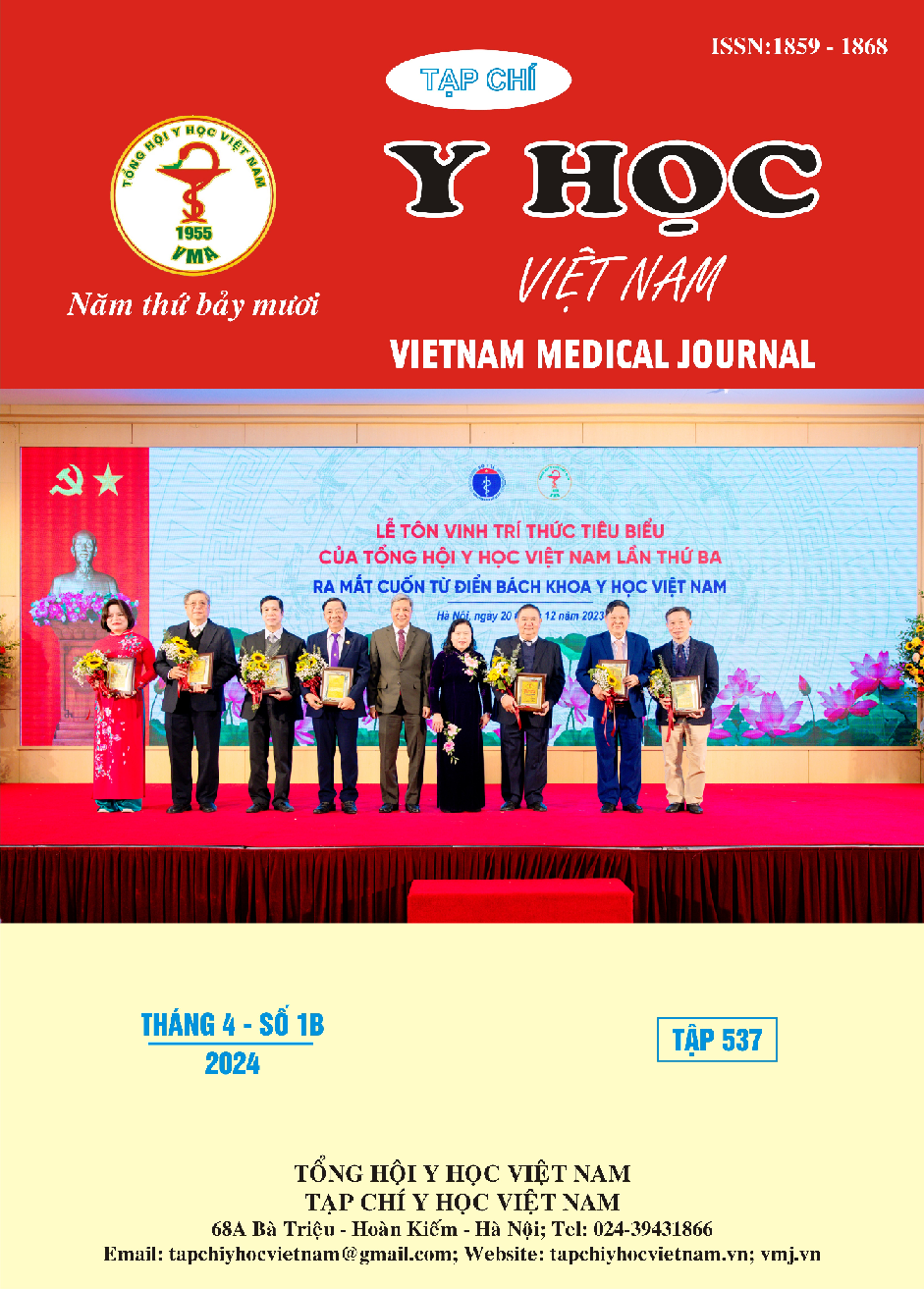NẠO VÉT HẠCH VÙNG TRONG PHẪU THUẬT CẮT GAN PHẢI THEO GIẢI PHẪU ĐIỀU TRỊ UNG THƯ BIỂU MÔ TẾ BÀO GAN
Nội dung chính của bài viết
Tóm tắt
Mục tiêu: Mô tả đặc điểm nhóm bệnh nhân ung thư biểu mô tế bào gan được phẫu thuật cắt gan phải theo giải phẫu có nạo vét hạch vùng và đánh giá mối liên quan giữa nạo vét hạch vùng và kết quả phẫu thuật. Đối tượng và phương pháp: Nghiên cứu mô tả, hồi cứu các trường hợp được phẫu thuật cắt gan phải theo giải phẫu điều trị ung thư biểu mô tế bào gan tại Khoa Ngoại Gan mật tụy, Bệnh viện K cơ sở Tân Triều từ tháng 01/2022 đến tháng 07/2023. Kết quả: Phẫu thuật cắt gan phải theo giải phẫu đã được thực hiện cho 110 bệnh nhân (BN), trong đó có 31 BN được nạo vét hạch vùng (hạch cuống gan, sau đầu tụy, dọc động mạch gan chung), kết quả: tuổi trung bình: 50,5 ± 14,6 tuổi; 93,5% BN là nam giới; tỷ lệ mắc viêm gan B: 38,7%. Chỉ số AFP trung bình: 2560,1 ± 6074,9 ng/ml. Huyết khối tĩnh mạch cửa phải gặp ở 2 BN (6,5%). Kích thước khối u trung bình trên cắt lớp vi tính: 8,3 ± 3,9 cm. Đa số các trường hợp được kiểm soát cuống theo phương pháp Takasaki (80,6%). Thời gian phẫu thuật trung bình: 164,5 ± 41,7 phút; không có BN nào truyền máu trong mổ. Biến chứng gặp ở 14 BN (45,2%), bao gồm: cổ trướng (45,2%), tràn dịch màng phổi (3,2%). Các biến chứng này được phân độ theo bảng phân loại của Clavien–Dindo: I (78,6%), II (14,3%), IIIa (7,1%). Không trường hợp nào tử vong trong thời gian nằm viện. Thời gian nằm viện trung bình: 14,9 ± 9,9 ngày. Tổng số hạch vét được: 128 hạch. Tỷ lệ di căn hạch: 0,78%. Nạo vét hạch làm tăng thời gian mổ (p=0,04), tăng cổ trướng sau mổ (p=0,002), nhưng không làm tăng biến chứng nặng (p=0,3), không làm tăng thời gian nằm viện (p=0,06). Kết luận: Nạo vét hạch vùng trong phẫu thuật cắt gan phải theo giải phẫu điều trị ung thư biểu mô tế bào gan là phương pháp khả thi, an toàn và hiệu quả.
Chi tiết bài viết
Từ khóa
cắt gan phải theo giải phẫu, nạo vét hạch vùng, ung thư biểu mô tế bào gan
Tài liệu tham khảo
2. Xiaohong S, Huikai L, Feng W, et al (2010), "Clinical significance of lymph node metastasis in patients undergoing partial hepatectomy for hepatocellular carcinoma", World journal of surgery, 34, pp. 1028-1033.
3. Lê Văn Thành (2013), "Nghiên cứu chỉ định và kết quả phẫu thuật cắt gan kết hợp phương pháp Tôn Thất Tùng và Lortat Jacob trong điều trị ung thư biểu mô tế bào gan", Luận án tiến sĩ Y học - Đại học Quân Y.
4. Trịnh Quốc Đạt (2019), "Nghiên cứu ứng dụng kỹ thuật kiểm soát chọn lọc cuống Glisson trong cắt gan điều trị ung thư tế bào gan", Luận án Tiến sĩ Y học - Đại học Y Hà Nội.
5. Belghiti J, Noun R, Malafosse R, et al (1999), "Continuous versus intermittent portal triad clamping for liver resection: a controlled study", Annals of surgery, 229 (3), pp. 369.
6. Nanashima A, Abo T, Hamasaki K, et al (2013), "Predictors of intraoperative blood loss in patients undergoing hepatectomy", Surgery today, 43 (5), pp. 485-493.
7. Vũ Văn Quang (2019), "Nghiên cứu ứng dụng kỹ thuật kiểm soát cuống Glisson theo Takasaki trong cắt gan điều trị ung thư biểu mô tế bào gan tại Bệnh viện Trung ương Quân đội 108", Luận án tiến sĩ Y học.
8. Karamarković A, et al (2016), "Suprahilar Control of Glissonean Pedicle in the Open Anatomic Liver Resections: A Single Centre Experience", ournal of Digestive Cancer Reports, 4 (2), pp. 113-121.
9. Curley S A, Barnett Jr C C, Abdalla E K, et al (2017), "Surgical management of potentially resectable hepatocellular carcinoma", Monografía en Internet] In: Ashley SW, Tanabe KK, editors UpTodate Walthman (MA): UpTodate.
10. Dagher I, Belli G, Fantini C, et al (2010), "Laparoscopic hepatectomy for hepatocellular carcinoma: a European experience", Journal of the American College of Surgeons, 211 (1), pp. 16-23.


